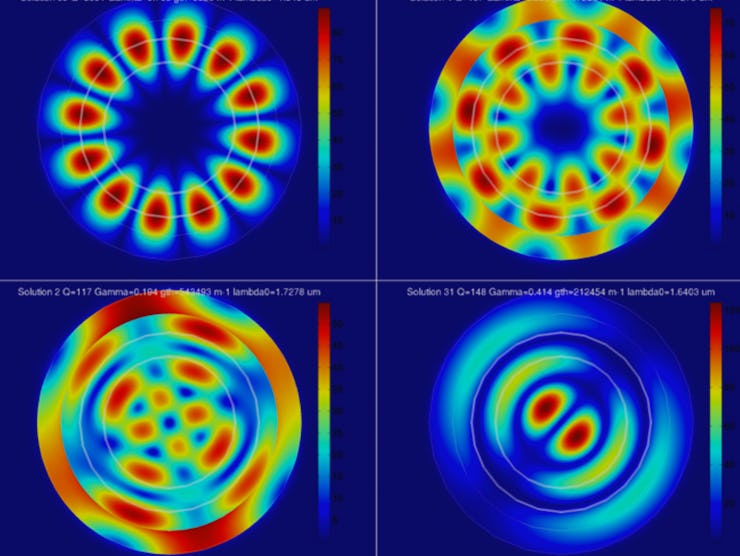Hyper-Thin Lasers Are the Future of High Speed Internet
Electricity is failing us -- it's time to make the switch to lasers.

The United States government predicts that the country is on track toward a future where data centers consume 140 billion-kilowatt hours per year by 2020, meaning there’s little time to waste when it comes to finding a new way to transfer data on the internet. Whopping data transfers mean wasted electricity and a big stinking carbon footprint.
What keep us from burning up via our own incessant need to stream “Damn, Daniel” is if we use specialized data chips that utilize laser technology. These energy-saving (and under construction) chips are profiled in the most recent episode of the University of California YouTube series, “Fig. 1”.
Janelle Shane first began researching this chip technology as a graduate student at the University of California, San Diego, went on to get her Ph.D., and has continued her work on the project. In the new video uploaded today, she explains that her lab is still testing out different laser designs, with the hope of building the most efficient model.
The technology behind these energy efficient chips is essentially this: Fiber optics made of glass can transport light from one place to another and has the advantage over electrical wires of not being at risk for any heat problems. Shane and her team discovered that they could fit more information on one strand of glass than it was ever possible to fit on a wire. The light here, cut down to diameter 100 times smaller than a human hair, is the laser. Laser light has to be extremely thin in order for it to fit on a computer chip.
“If we have more and more components on the same chip, then we don’t have to covert signals to electricity so much, and that saves us energy there,” said Shane in a press release for the new video. “The more information we can send via light, we also will save energy for heating up.”
To see for yourself how the future of the internet could be based off little chips flowing with lasers, check out the new episode of “Fig. 1”: